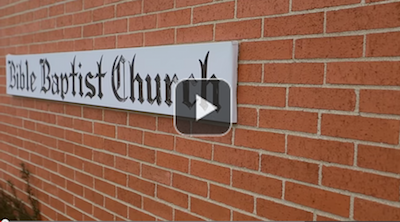JANUARY 9, 2024
“But the dove found no rest for the sole of her foot, and she returned unto him in the ark…” (Genesis 8:9)
We must admire Noah’s wisdom respecting the thoughtful and resourceful method that he employed to determine the conditions outside the ark. It had been forty days since the flood waters were abated, and he was eager to know if the earth was yet ready for human habitation. The Lord had instructed him when to enter the ark, but as for when God would have him to disembark was a matter to be ascertained.
After many months of confinement, and no way to see his surroundings (the only window looking upward), Noah sent forth two birds as a means to gain the knowledge he needed. The first bird that he dispatched was a raven. When the raven did not return Noah was able to learn that the waters had subsided at least enough that objects were visible above the water, which would provide a place for the raven to light and rest. However, he still did not know if conditions were suitable for humans. Thus, he sent a second bird, a dove. If the dove did not return, he would know that it was safe for all to come out of the ark. The dove is a bird of the valley (Ezek. 7:16). They inhabited the low places, unlike the birds of prey which took to the high places. Doves are gentle, peaceful, meticulously clean creatures, which cannot abide filth, especially dead rotting carcasses and such things that the raven would find very suitable.
Noah sent forth the dove in the morning, and at evening she returned, no doubt, weary, speckled, and perhaps with dirty feet. When she tried to land the stench would force her to take back to the air. Even though her wings were heavy, she was forced to spread them and continue in flight. At last, as the sun was setting, she made her way back to the ark where she found her caring master, his hand outstretched to retrieve her “and took her, and pulled her in unto him into the ark.”
Without taking anything away from this true historic event, and the purpose that was achieved with respect to the situation, let us see this as a great allegory. Using it as a parable, we see Noah as a type of Christ our Lord, the ark as representing the church, the raven as picturing unregenerate sinners, and the dove as a picture of regenerate believers. The dove was a clean bird, both ceremonially and actually. She pictures righteous souls. The raven was an unclean bird, both ceremonially and actually. He pictures unrighteous worldlings.
We see the raven, as he was sent out; he gladly flew away from Noah and the ark. He found in the unrenewed world everything that delighted him, and thus, he did not return. His nature and his appetite were well satisfied with the filth and corruption that pretty much covered the earth. This is an apt picture of the ungodly. They are happy to go out from Christ and the church. They delight to feed on the sinful pleasures and pursuits of “this present world.”
The dove, on the other hand, went out, sent by her master, who had rescued her from perishing and had provided her every need. Why did she go? She was sent on a mission by her master. As she went, she was curious about what she saw, and no doubt, tried to check it all out, but she was repulsed by the things that she tried. Now there was the raven over yonder, and he was quite enjoying himself, feasting on an endless buffet of carrion. But her pure nature would not allow her to indulge. Being a homing bird by nature, she surely searched out her old dovecote where she used to live, but nothing was the same as it used to be. She now had a new home, and she was much better suited to it. “This world is not my home, I’m just a passin’ through.” It was once our home, but it is no longer.
The regenerate soul cannot take delight in the corruption and filth of this world. The new nature, which is our new identity, must constantly be at war against the old nature (Rom. 7:22, 23), yet “Whosoever is born of God doth not commit sin…” (I John 3:9)
| Virus-free.www.avast.com |



Speak Your Mind